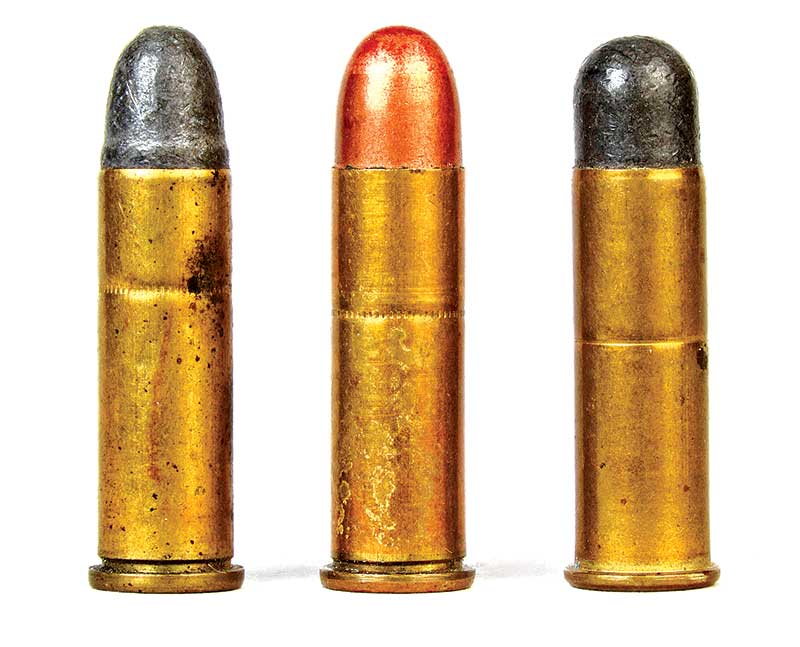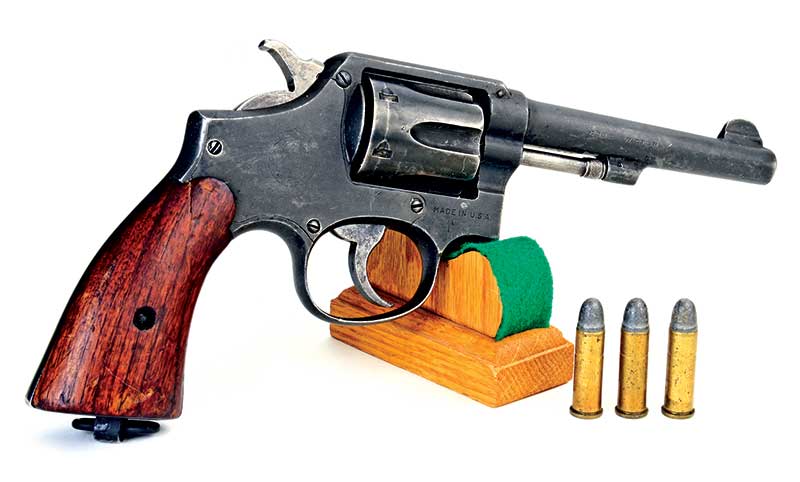DE-MYSTIFYING .38 SPECIAL MILITARY LOADS
After a feature on WWII revolvers appeared in Handgunner (“WWII Revolvers”), reader Marshall Williams wrote our esteemed editorship Roy, informing him of a significant error in the article. To my chagrin it turns out Mr. Williams was abolutely correct so I would like to thank him for the information.
I wrote during World War II the US Navy and US Marine Corps supplied many Smith & Wesson M&P .38 Special revolvers to air crew. In that I was on-target. However, I also wrote their ammunition held 130-gr. FMJ bullets. And with that I missed the bullseye even though my source was the respected book U.S. Cartridges and Their Hanguns 1795-1975 by Charles R. Suydam. On page 174 the late Mr. Suydam shows a .38 Special round saying it was the 130-gr. FMJ for military use in WWII.
Mr. Williams had different information which he supplied in detail, but I had to find something to corroborate it. According to his sources, at first aircrew were issued standard 158-gr. roundnosed lead factory loads as commonly used by American police at that time. Of course, plain lead alloy bullets violated international conventions proscribing expanding bullet ammunition. In fact the British had been taken to task about this same subject with their .38/200 grain load for Enfield No. 2 revolvers. Thereafter they issued FMJ bullets weighing 178 grains for them.
After receiving Marshall’s letter I consulted every book in my possession to try to prove him wrong and I couldn’t do it. Cartridges of the World, 9th Edition listed a military load in the .38 Special section of a 130-gr. FMJ bullet with a velocity figure of 950 fps. Next checked was Military Small Arms of the 20th Century, 7th Edition. It was certainly off base, giving a .38 Special military load’s bullet weight as 200 grs. with a velocity of 750 fps. The book Military Handguns of Two World Wars by John Walters ignored .38 Specials altogether. None of my reloading manuals concerned themselves with .38 Special military loads in their informational preludes to load data.
Detective Work
Next I spent hours perusing my rather extensive array of cartridges kept for photo props. Considering I’m not a cartridge collector as such, my assortment of obsolete rounds is impressive. I just knew there were some WWII .38 Special rounds mixed in with things like .44 Henry Rimfire or .41 Rimfires for Remington Derringers. I knew samples had to be there because in the mid-1960’s I came into a batch of FMJ .38 Special loads and felt certain I kept a sample or two.
Evidently like any good teenager I shot them all away. Besides a few red-tipped tracer .38 Special rounds with commercial Rem-UMC headstamps — as also described in the Suydam book’s page 174 — all I could find were some empty cases headstamped WCC71. No joy there.
So finally the next step was one I really did not want to take. That was to consult the Internet. My hesitation stems from the fact there is just so much misinformation online. However, after searching “.38 Special” with World War II, I’m satisfied the details found on Wikipedia are correct.
According to the site, in May of 1943 the government-owned Springfield Armory developed a steel jacketed .38 Special load with 158-gr. bullet. Its velocity was rated at 850 fps from the 4″ barrel of a revolver. It does not mention where those loads were produced in bulk. Outfits like Winchester and Remington produced military ammunition during World War II as did many government owned facilities. Wikipedia did mention the steel bullet jackets were given a copper coating and also red tipped tracer ammunition was made with both 120- and/or 158-gr. bullets.
Ah-Ha Moment!
The 130-gr. FMJ .38 Special loading did not arrive on the scene until 1956 according to Wikipedia. And then it was at the behest of the US Air Force. Its official designation is M41 Ball. It’s not rare, and boxes of M41 can be found on firearms auction sites.
Just for reader information I’d like to add one fact. Back in the ’60’s when shooting up those military .38 Special loads, one was a squib. Its bullet stuck midway in the barrel of my treasured S&W K38 and I remember thinking, “Oh boy this jacketed bullet might be hard to drive out.” It was not because its nose was covered by a metal jacket but its bearing surface was lead alloy. I wish it was still on hand to weigh.
So Mr. Williams, we thank you for giving us a reason to dig deeper into .38 Special military ammunition details!
Subscribe To American Handgunner

Get More Revolver Content Every Week!
Sign up for the Wheelgun Wednesday newsletter here:






